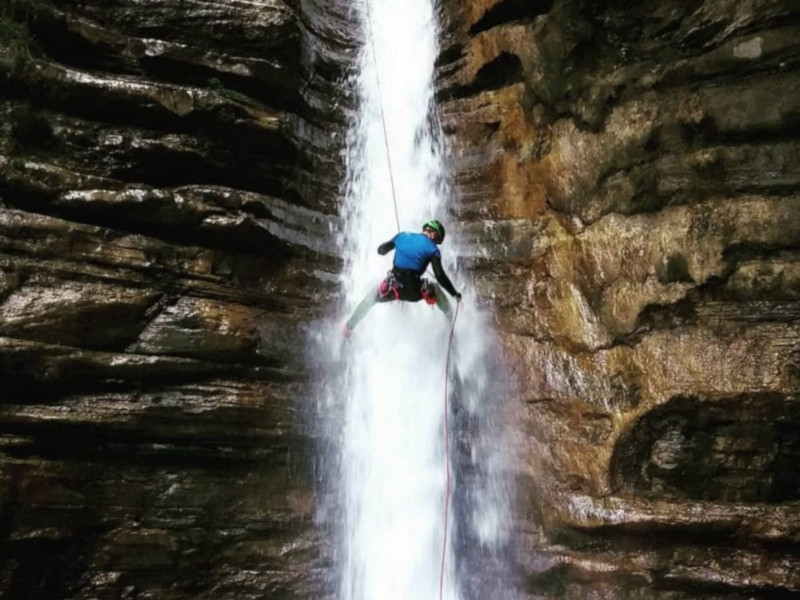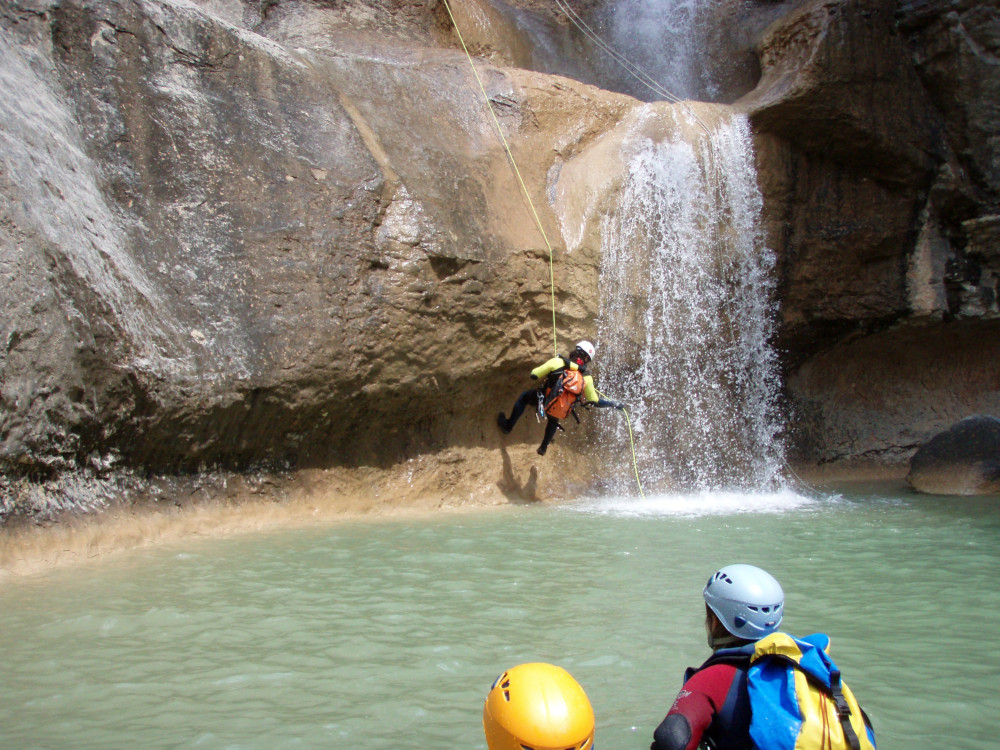Tips for beginners in canyoning: technique, places and advice

You may be interested in: Canyoning in the Huesca Pyrenees>>>>>>>>>.
How to choose a canyon for canyoning?
The practice of canyoning offers many strong emotions, and keeps you in almost direct contact with nature, but you should be cautious in its practice, always knowing everything you can do to prevent any possible accidents. Should this happen, you should be prepared to act, especially not underestimating natural accidents, such as a river, its isolation and the complexity of evacuation or rescue.
The majority of accidents in this sector are perfectly avoidable with good planning, attention to detail and knowledge of the prevention techniques. It's up to you.
The choice of location where practising is up to you. Everyone has a certain technical difficultya greater or lesser commitmenta flow more or less constant... You must take into account the physical formation of your group and their previous training to select the ideal canyon.
You should also be aware of and respect the rules regarding GROUP SIZEThe number of people in the group, which should be small but never less than three.
If you want to start making a plan, you should rely on web information and paper guidesso that you don't make any silly planning mistakes. Gather as much information as possible.
Take into account the time of the practice day, as thunderstorms or heavy rain add to the danger and should be avoided. You could even get caught in the rain.
You should be aware that there may be different contingenciesIf you do not know how to do this, you will have to change your route, so it is vital that you are fully familiar with the canyon and its current state.
In short, therefore, you must be vigilant:
- If equipped, which would entail carrying suitable material. You should choose canyons with chemical anchors.
- Your physical-technical training and that of your colleagues.
- The time where you are going to do the activity.
- The time for the day of realisation.
- The state of the entire ravine area.
- The planning must be perfect.
- You must also not forget that you have to report of everything to your colleagues!
You may be interested in: Canyoning equipment: the 12 basics you can't miss if you go canyoning >>>>.
Canyoning and safety: training
Here we will give you some recommendations for safe canyoning, focusing particularly on the training:
- You should pay special attention when walking along the slippery groundYou could fall and have an accident.
- With a high complexity of the canyonYou will have to pay special technical attention to abseils, siphons...
- If you don't go with a guide, and even with him, you should have taken some regular courses on the basic techniques.

- You must be in good shape and have a great handling technique. canyoning equipment if you want to go safely. Once you have both, you should build up your knowledge so that you have a decent reaction capacity if things get complicated by any unforeseen events. You should also carry some eating and drinking in case complications force you to wait several hours to be rescued.
- As we said before, it is highly recommended that your group is of a minimum of 3 personsThe aim is for each of you to compensate for the weaknesses of the others and for you to be able to work together to obtain acceptable experience, technique and overall autonomy.
- If you have any doubts, you should contact someone specialised in the subject, so that there is no possibility of suffering any unforeseen eventuality due to a lack of knowledge of certain aspects.
Don't miss any adventure in the Pyrenees!
